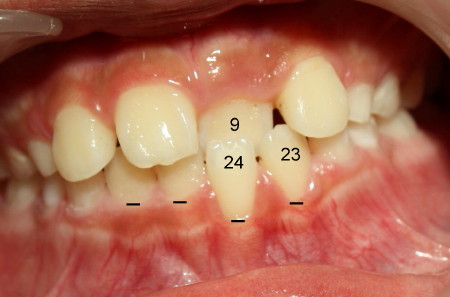
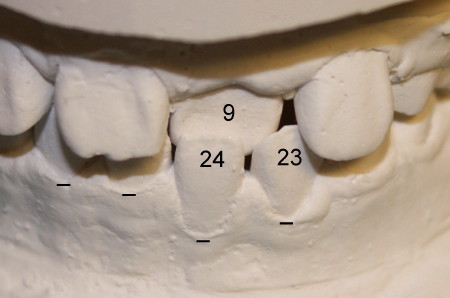
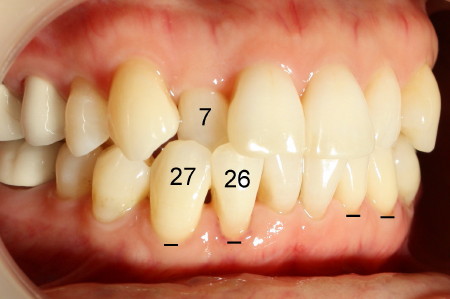
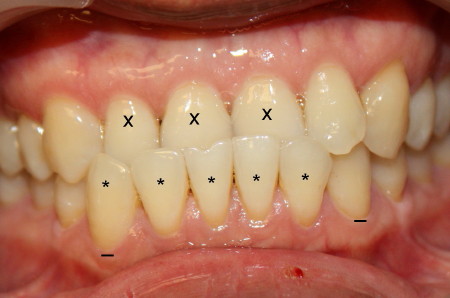
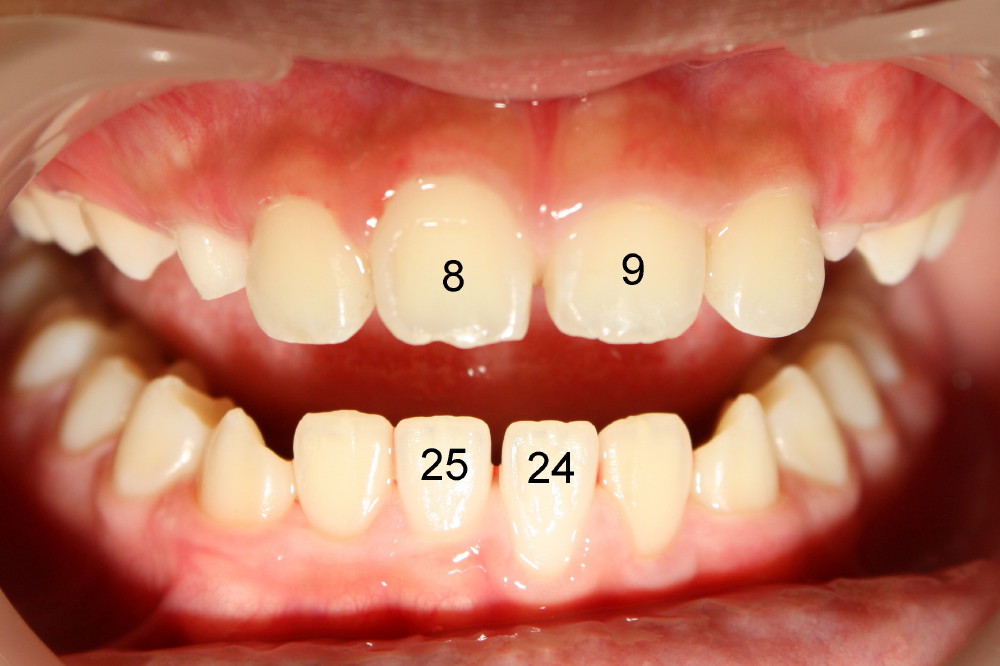
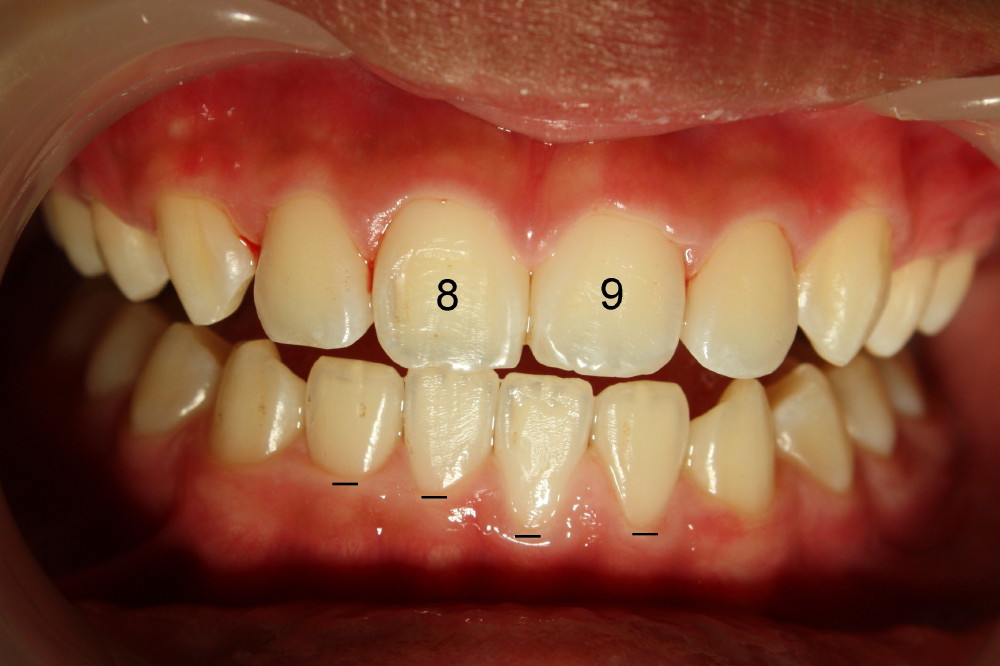
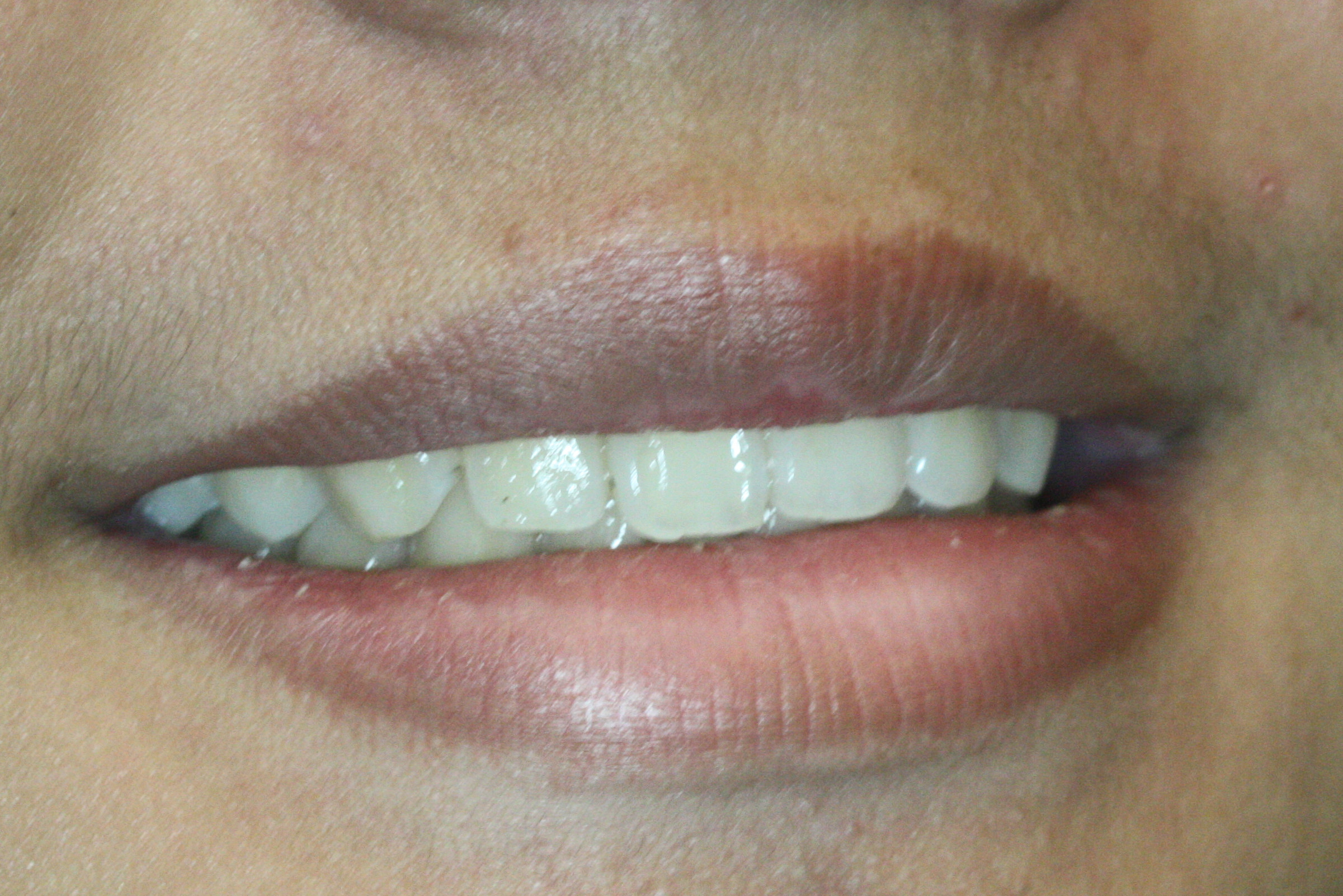
 |
 |
| Fig.1 | Fig.2 |
 |
 |
| Fig.3 | Fig.4 |
 |
 |
| Fig.5 | Fig.6 |
 |
<-- Fig.7: 5 years after braces |
Dental Education Lecture: Crooked Teeth and Receding Gums
Jeff is a eight-year-old boy. His mother wants to have braces for him, because of one of his front teeth on the top (Fig.1 and 2: #9, central incisor) is abnormally inside the bottom teeth (#23, 24). Inwardly positioned tooth #9 (cross bite, lock in) creates a cosmetic issue. It also pushes the two bottom front teeth forward. The gums of these two teeth are receding a little too much, as compared those of two neighboring teeth. The gum lines of these four front teeth on the bottom are labeled in black lines.
A lateral incisor (#7 in Fig.3) of Mrs. Li (in her fifties) is also in cross bite. It pushes two lower front teeth (#26,27) forward, causing their gum to recede, as compared to those on the other side (lines).
Jeff's mother has three upper front teeth (Fig.4: x) and five bottom front teeth (*) in cross bite. The gums of the lower teeth are also receded. Compare two black lines representing gum lines of the comparable teeth.
In brief, when our teeth are crooked, it is easy to have gum diseases such as gum recession. Early braces may bring receded gums to normal. We just place braces for Jeff. We hope that gum recession can improve when cross bite is corrected. We will keep our readers posted. If we happen not to have chance to have braces in our young age, we should have good oral hygiene to prevent gum recession from getting worse. In fact, Mrs. Li and Jeff's mom have pretty good dental health so that gum recession is not so bad.
One month after braces, Jeff's cross bite is fixed.
Braces are removed two months later (Fig.5). There are gaps between front teeth (8/9, 24/25).
Two years later, these gaps are closed automatically (Fig.6). Gum levels are pretty normal for the bottom front teeth. The tooth alignment remains the same 5 years after braces (Fig.7).
Xin Wei, DDS, PhD, MS 1st edition 11/20/2010, last revision 05/21/2017